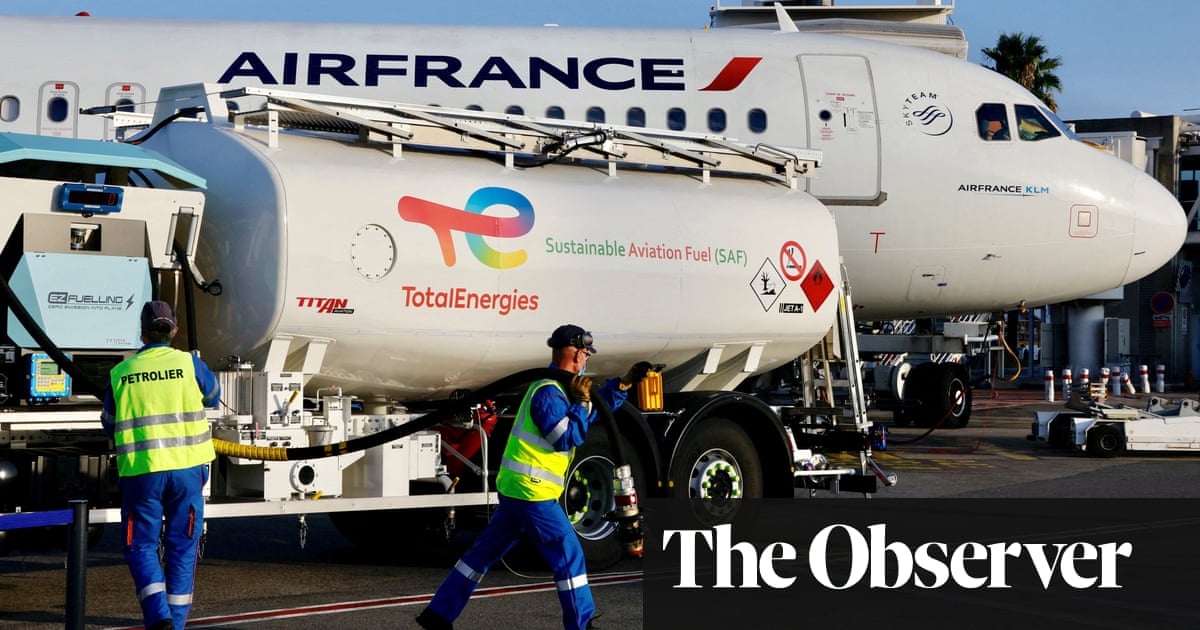
Sustainable aviation fuels may or may not eventually transform the carbon footprint of flying. But while a full tank is a way off, the mere whiff of a guilt-free future has got airline executives giddy.
The annual meeting of Iata, the airlines’ global trade body, in Istanbul last week served up some exotic fare. Was that Willie Walsh, its director general, denouncing governments for “greenwashing”? And Marjan Rintel, boss of KLM and fresh from a Dutch court battle against government caps on Schiphol flights, outlining her purpose to “create memorable experiences on the planet we care for”? And Mehmet Tevfik Nane, head of Turkish airline Pegasus, co-hosting an event for 1,500 delegates where he urged firms and states to join their climate struggle, saying “we have to take care and heal our world”?
Wider society’s mix of dissociation, hope and underlying fear about climate is writ large in aviation, whose leaders are well aware of its outsized share of greenhouse gas emissions and lack of easy options to decarbonise. Meanwhile, passenger numbers are booming, with rampant demand for travel after Covid. Airlines are gearing up for worldwide growth, as China reopens and Indian carriers expand.
Bar the obvious solution of flying less, immediate tangible steps to cut CO2 are limited. Commercial flights using hydrogen or electric power are, at best, a hope for the future. Replacing old fleets with modern fuel-efficient planes for less CO2 a head is a step most airlines are taking – but that benefits the bottom line more than the environment when more people fly.
So, the magic elixir is SAF – sustainable aviation fuel – which Walsh affirmed would “be the biggest contributor to net zero success”. However, in broad terms right now, it “basically doesn’t exist”, as Iata’s chief economist, Marie Owens Thomsen, put it. Airlines might be using “every single drop” of SAF available, but that amounts to 0.1% of the total jet fuel needed – and supplies are impossible to find in much of the world.
Airlines are looking at an interim target of 30bn litres a year – 100 times the current supply – by 2030. The reasons for hope are a plethora of projects springing up, especially in the US; rapidly developing technology; and some government policy backing – even if Iata is uneasy about laws mandating minimum blends of SAF in jet fuel.
In the broad category of SAFs, synthetic fuels or e-fuels are seen as the most credible way forward by many – involving a process that draws carbon dioxide from the air, albeit energy-intensively, rather than using sources that are limited or problematic. For example, one SAF source, or “feedstock”, is animal fats. According to a report by the Brussels-based charity Transport and Environment, creating enough SAF for a transatlantic flight would require the fat of 8,800 pigs.
Quite apart from the ethical concerns – the Vegan Society of Canada has warned against flying on the basis that SAFs could already be in the tank – the practicalities of the necessary feedstock, be it pigs, cooking oil, plants or waste, appear to be an enormous barrier.
Tim Clark, the president of Emirates Airlines, asked: “There’s only so many animals you can slaughter to get the oil … Where’s the feedstock?” For him, e-fuels are more feasible, but he warned: “Money is probably the biggest single blocker, because these are hugely expensive programmes. So I’m afraid that means nuclear coming into the mix. That’s not going to sit well with Greens, but in the end, I don’t see how you’re going to drive enough power to get your synthetic fuels and power the rest of the global economy sustainably with wind or whatever it may be.”
Iata argues that the pace of change and investment is driving rapid progress. Walsh – who lambasted a recent Royal Society report spelling out the improbability of using current UK renewable energy capacity and feedstocks – said: “People will try to discredit it, but that’s not fair. SAF is a genuine, significant contribution to a better environment. You’re recycling the CO2 – that’s what it’s about, reducing or maintaining or not increasing the levels of CO2.”
Not everyone is convinced. Caitlin Hewitt, policy director of the Aviation Environment Federation, said she would love a guilt-free plane trip – “but there is increasing scepticism about the possibility of scaling up SAFs”. She said: “There’s no feedstock – everything is in demand elsewhere. They work really much more like an offset.” And, like offsets, some are clearly better – such as e-fuels synthesised with direct carbon capture – while the carbon neutrality claimed for others was questionable, she said: “The idea of using waste from processes such as intensive agriculture or animal fats, or plastic manufacture, that are fundamentally unsustainable … I don’t think you can claim that as a sustainable carbon reduction.”
While Walsh said that airlines’ commitment to net zero emissions by 2050 was “fixed and firm”, the flight path is less so. Emirates recently announced its own $200m (£160m) research fund, because, Clark said, “with the current pathways available, our industry won’t be able to hit net zero targets in the prescribed timeline”.
Focusing on SAFs, said Clark, risked diverting the focus from progress in more efficient technology now – developments such as the Rolls-Royce UltraFan engine, which the manufacturers hope will bring another 10% fuel saving.
Rintel, who is jettisoning her fleet’s last Boeing 747 freighters for less fuel-hungry and quieter Airbus A350s, stressed efficiency was the priority for KLM, with SAFs on the future wishlist. On the promise of net zero fuels, “there must be somewhere a breakthrough,” she said. “I think we’re more in the curve, but the question is, when will it pay out? Nobody knows.”












